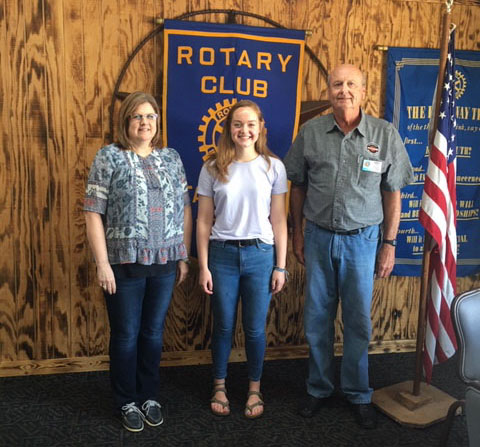WELCOMING ANNA KAYE AS GUEST to Fairfield Rotary Club is Treasurer Angela Oglesbee and President James Tyus. Anna Kaye is the daughter of Helen Kaye and Sheldon Williams. (Photo Submitted by Donna Tyus)

Guest speaker for the Fairfield Rotary Club on August 11th was Anna Kaye Williams. Anna Kay is a Sophomore at Sam Houston State University majoring in Music Therapy. She spoke on how music is used in various ways as a technique of complementary medicine. Music therapy is an evidence-based clinical use of musical interventions to improve clients’ quality of life. Music therapists use music and its many facets— physical, emotional, mental, social, aesthetic, and spiritual— to help clients improve their health in cognitive, motor, emotional, communicative, social, sensory, and educational domains by using both active and receptive music experiences. These experiences include improvisation, re-creation, composition, receptive methods, and discussion of music.
Music transcends time and is present in all communities throughout the world. Given the universal nature of music, music therapy is uniquely able to reach individuals across all backgrounds and ages. It does not require any previous knowledge for individuals to meet their goals and be successful. Music therapy provides individualized treatments to help treat individuals with disabilities, injuries, illnesses or to improve their wellbeing.
Some common music therapy practices include developmental work (communication, motor skills, etc.) with individuals with special needs, songwriting and listening in reminiscence, orientation work with the elderly, processing and relaxation work, and rhythmic entrainment for physical rehabilitation in stroke victims. Music therapy is used in some medical hospitals, cancer centers, schools, alcohol and drug recovery programs, psychiatric hospitals, and correctional facilities.
There is a wide qualitative and quantitative research literature base for music therapy. Music therapy is distinctive from Musopathy, which relies on a more generic and non-cultural approach based on neural, physical, and other responses to the fundamental aspects of sound.




